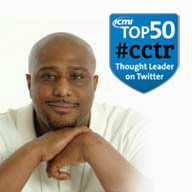We are currently running Olympics to support a global enablement effort. We thought a little competition would be stimulating for this time sensitive delivery - we have 4 continents in the race. As the number of staff differs between locations, the targets are expressed in percentages of the local team, not to create Davids and Goliaths. Using multicolored graphics to report regularly on progress, interest picked very rapidly. Relevance of choice is important. The Olympics model was ideal for this two phase project: the preliminaries focused on the practice while the competitions are focused on the delivery. With the appropriate choice, the model helps the planning and the running of the project: things fall in place more easily.
In the next example, we wanted to enable everyone with knowledge that a few acquired through dealing with critical situations. We wanted the postmortem findings to reach contributors across the globe. Rather than deliver the lessons “dry”, we organized Jeopardy games. We used the data from the post mortems to feed the questions for the game. The games helped reinforce and spread the learning. While two teams faced each other competing for a day off, the game-show format extended the fun and learning to the entire audience.
The thematic can also be used for the sole purpose of creating interesting reporting. A few years back, I used the then-trending "Tiny Tower" game to model the reporting of a five phases re-engineering effort. We built a storyboard scene of a six stories building: the lobby where all participants appeared, one floor per phase and the roof. The participants were Bit-characters dressed in their country flag. During the project, we followed the bitizens progress through the floors, all the way to the much coveted roof. Each country wanting their bitizens up on the roof first, this lead to friendly peer pressure and alliances.
Rewards are most often Corporate provided - merchandise points, time off, or other items alike. Variety helps. In a world where Open badging is picking up in popularity, virtual rewards are increasingly given consideration and may be of interest. In my previous role, I lead a team of account managers who have great autonomy to find ways to personalize their service to bring value to their customers. To celebrate success and inspire others in their actions, I started each team meeting with a Superman slide where bullets highlighted accomplishments to which the contributors would speak. This was the most appreciated part of the meeting. I extended the metaphor by rewarding quarterly a top contributor with a collector comic’s book.
There are a myriad of events with global visibility that managers can choose from. Knowing your team members and their interests outside of work may help set the mood for the magic, else, the wisdom of the crowd can help identify trending topics. Even temporary, this little extra can go a long way to support the team members in developing their relationship and in their project delivery. Create and enjoy the moment!
 Diane Morneau, M.Sc.
Diane Morneau, M.Sc.Manager of Communications, Offerings and Knowledge Development IBM
Diane worked for several computer manufacturers, in pre- and post-sales’ positions, supporting technological progress and adoption. People-oriented and actively engaged, she assumed teaching, coaching, management and marketing roles. Achieving customer success through teaming, transferring knowledge and finding creative solutions to challenges are her true motivators.
Follow Diane on Twitter and LinkedIn.





